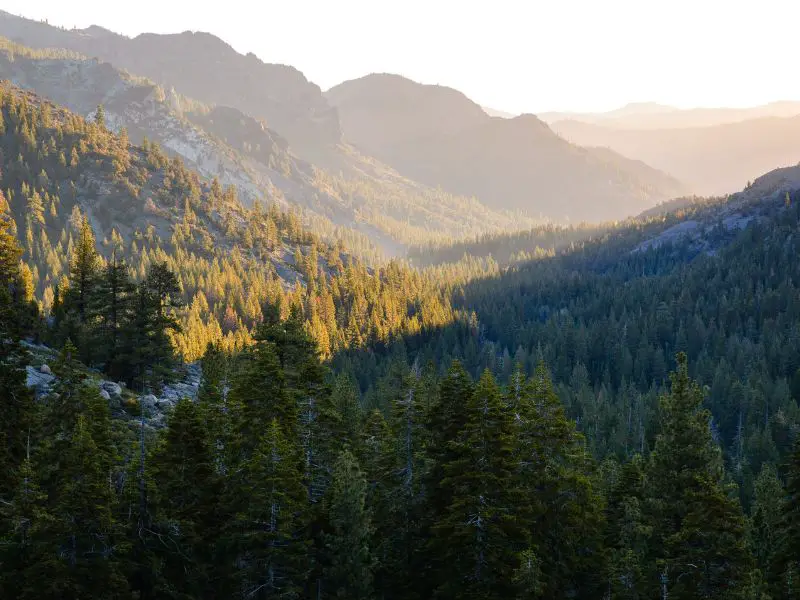The climate and habitat diversity in California is excellent for the invasion and spread of non-native plants. Invasive non-native plants threaten the well-being of California’s forest and grassland ecosystems by reducing biological diversity, distorting water patterns, affecting rare species, altering wildlife habitat, modifying vegetation structure, altering fire and nutrient cycles, and degrading soil structure.
We are no strangers to the destructive impacts of invasive species in California. In this article, we’ll look into some of California’s most aggressive invasive plants, learn how they spread, and some management strategies for controlling the spread and impact of these species.
What Are Some Invasive Species in California To Look Out For
1. Yellow Starthistle
The yellow starthistle is a herbaceous annual plant. The plants are gray-green to blue-green, range in height from 6 inches to 5 feet (15 cm to 15 dm), and have deep taproots. Flowers are brilliant yellow, and the spine around the plant’s base gives it a threatening look.
The yellow starthistle is a formidable invader discovered in every county in California and looks to be migrating north and east. Some researchers compare the spread of this plant to that of leafy spurge in North Dakota and Montana. As the plant infests a region, it suffocates the natural plants, diminishing biodiversity, animal habitat, and forage.

2. Scotch Broom
The eastern and western coastlines of North America and the states of Idaho, Montana, and Utah are all home to a Scotch broom (Cytisus scoparius). Originally from northern Africa and specific areas of Europe, this plant made its way to the east coast of North America before being brought west to California for its decorative value. Scotch broom was a common garden addition from the 1850s through the early 1900s. It was used to prevent erosion around highway fills.
Scotch broom is tough to manage. This plant spreads fast as it produces a lot of seeds and can withstand dry summers. It creates dense, shady thickets that may impede and prevent the development of native plants, ultimately leading to its complete control of the understory and canopy.

3. Giant Reed
Giant reed grows along rivers and streams. In places where it is invasive, it takes the place of native trees and grasses along rivers and streams, changing the ecosystem of riparian areas. It proliferates quickly and is hardly unstoppable. While they dominate green spaces, they do not provide the same habitat as the plants it takes place.
Giant reed grows in thick monocultures, crowding out natural flora for soil moisture, nutrients, and space. When dry, it is very flammable and poses a fire risk in riparian environments that are not used to sustaining fire.

4. Spotted Knapweed
Spotted knapweed can produce as many as 140,000 seeds per square meter. That’s huge. Their seeds make their way to various areas in California through undercarriages of vehicles, spreading new infections over vast distances. Knapweeds also spread through open air, poultries, and people, thriving well in open areas and arid soils, where they dominate grasslands, forests, and roadsides.
Spotted knapweeds can grow across huge regions due to their secret power – the ability to emit toxins that kill neighboring plants. They suffocate forages for cattle and animals and contribute to soil erosion.

Economic Impact of Invasive Species on California
Today, at least $82,000,000 is spent annually on invasive species in California alone. This has been a financial burden for California, so methods have to be developed to reduce this cost.
Most of California’s money spent on invasive species comes from the state’s current control, monitoring, and outreach expenditures. Fighting invasive species in California is also a significant investment and source of loss for California’s ecosystem and natural habitats. Therefore, correct methods for combating invasive species must be implemented, and efforts must be focused on these species.
California Invasive Species Prevention
Invasive species thrive by adapting to their environment and can grow unchecked when no or inadequate controls are implemented. Many invasive species are detrimental to the ecosystem, causing harm in many ways, causing or spreading diseases, and affecting wildlife populations. In California, invasive species pose a real threat to the natural environment, economy, and quality of life for those who live in the state.
The Forest Service has spent an average of $500,000 per year over the last three years treating high-priority invasive non-native plant species on NFS properties (in 2008, around 1,200 acres were treated using NFVW funds). In 2009 with extra WFW3 funding, Around 5,750 acres of targets were treated.
Feed and straw used in field management can bring invasive plant species to construction sites. Using fodder and straw free of weeds helps reduce the spread of invasive species.
UC Cooperative Extension collaborated with the California Department of Food and Agriculture and County Agriculture Commissioners throughout the state to make a list of suppliers selling certified weed-free fodder and straw in California. You can find this list and other resources on the Weed-Free Forage and Straw Resources page.

As part of a national initiative, the California Forest Service is initiating the development of a Native Plants for Restoration Program to promote the use of native plants in restoration activities, manage and conserve terrestrial and aquatic biodiversity, and prevent the introduction of invasive species.
Invasive species can spread quickly and can have severe impacts on the environment, the economy, and on human health. They can upset the ecological balance by out-competing native species for food, space, and habitat. Without proper intervention, invasive species are one of California’s biggest environmental challenges.
Invasive species can come from just about anywhere and cause actual harm when released into California’s wild spaces. California draws both people and wildlife from all over the world. Sometimes, though, people sneak non-native plants and animals in, and the consequences can be dire. When species spread out of control, they must be dealt with quickly and possibly destroyed.
Related: Invasive Species in New York, Invasive Species in Hawaii, Invasive Species in Michigan


1 thought on “Worst Invasive Species in California & Their Impact”